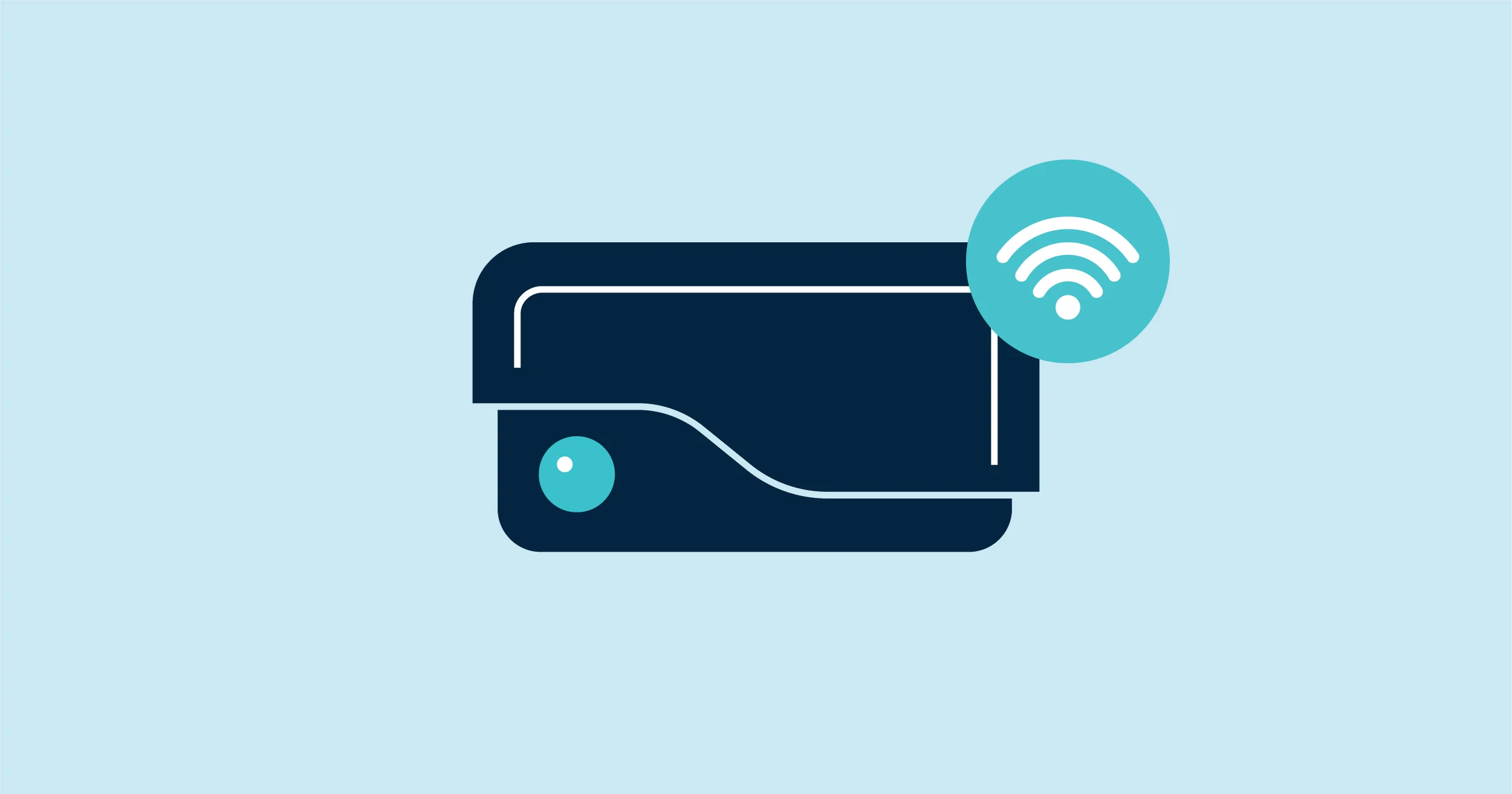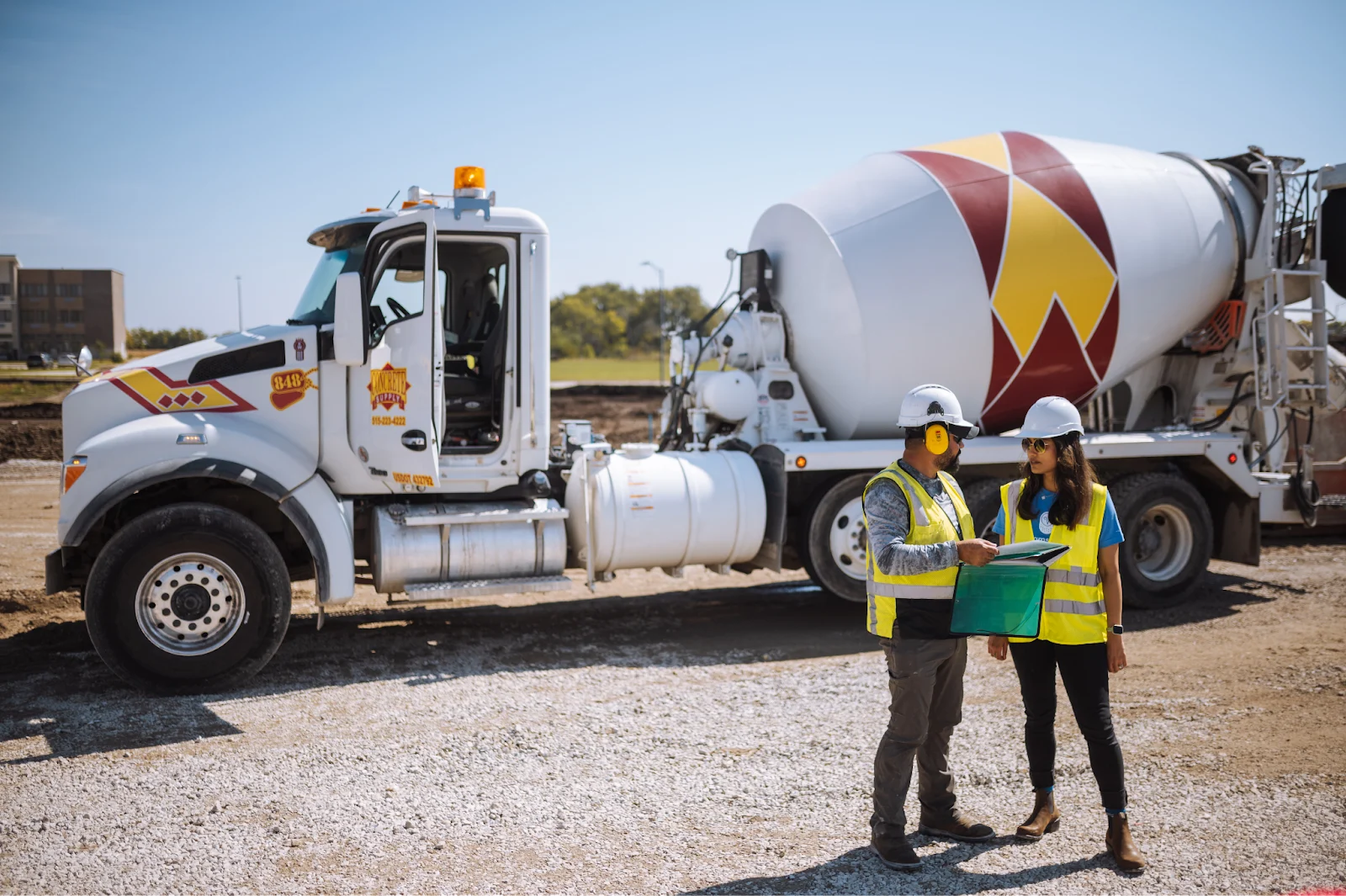A fleet manager’s guide to dual dash cams
November 14, 2025

Get Started with Samsara
Check our pricesKey Takeaways
Dual dash cams can help your fleet reduce accidents, exonerate drivers from not-at-fault accidents and false claims, and lower costs. Learn about the benefits of dual dash cams, the most important features, and the best dash cams for fleets.
The right technology is essential for fleet safety. The annual accident rate for commercial fleets sits at a dangerous 20%, and the average cost of an accident is $70,000. As these numbers continue to rise, it is increasingly important to monitor the safety of your fleet and drivers effectively.
Dash cams, also known as dash cameras or dashboard cameras, are an extremely effective safety tool for fleets. The video footage they provide can be used to coach drivers, reduce risky driving behavior, and even exonerate your company from not-at-fault accidents. But there are a variety of different types of dash cams available—and some are more valuable for commercial fleets than others.
Dual dash cams, or dual-facing dash cams, give you a view of the road ahead as well as the inside of the vehicle, making them an extremely valuable add-on to your fleet vehicles. Keep reading to learn about dual dash cams and why they are worth the investment.
What are dual dash cams?
Dual dash cams (also known as dual lens dash cams, dual-facing dash cams, or dual cameras) are a type of dash cam that is mounted on a vehicle’s windshield. In addition to a camera lens that faces the road ahead, these dash cams also include an inward-facing camera that captures in-cab activity.
Dual dash cams are ideal for fleets looking to invest in a robust driver coaching program and successfully exonerate drivers from complicated incidents, since in-cab footage can be used in the case of an accident to show that a driver was attentive and driving responsibly. Some dual dash cams also include a built-in audio speaker, so they can provide in-cab alerts for risky behavior like distracted driving or speeding.
How are dual dash cams different from other dash cams?
Different types of dash cams serve different purposes. Below is an overview of the differences between four commons types of dash cams:
Forward-facing or front-facing dash cams are mounted on a vehicle’s windshield to record the view ahead. Front-facing cameras (or front cameras) that provide good video quality are a great option for capturing basic incident footage, which is helpful for expediting insurance claims.
Dual-facing dash cams, also known as dual lens dash cams or simply dual dash cams, record the road ahead as well as the driver inside the cabin. Most other types of dash cams include only a front or inward camera, which can only show road conditions leading up to an accident. A dual dash cam allows for complete visibility by filming drivers as well, helping to reduce high-risk behavior and provide additional footage that can be used to exonerate drivers from not-at-fault accidents.
Exterior cameras are mounted on the outside of the vehicle and are often part of a multi-camera system—a combination of rear-facing (or rear dash cam) and side exterior cameras that allow for a 360° view around the vehicle. Backup cameras or rear cameras are helpful for eliminating blind spots and reviewing sideswiping accidents.
Interior cameras monitor activity inside a vehicle or trailer, which can be helpful for preventing cargo theft. Like exterior cameras, they are often a component of a multi-camera dash cam system.

What are the benefits of dual dash cams for fleets?
Dual dash cams provide a variety of benefits for commercial fleets. Here are a few ways they can help protect your drivers and streamline your operations.
Exonerate drivers from not-at-fault accidents: The high-resolution footage provided by the camera’s video recording system provides irrefutable, unbiased evidence in the case of an accident. Footage from dual dash cams allows you to defend your company and drivers in the event of false claims and legal battles. By selecting a internet-connected dash camera that auto-uploads footage to the cloud, you can retrieve relevant footage on demand, making insurance investigations faster and less costly. Because dual dash cams capture footage of the driver as well as the road, they bring the added benefit of showing the driver’s activity at the time of the incident. This is vital in cases where your driver is wrongly accused of misconduct.
Reduce risky driving behavior: According to the National Highway Traffic Safety Administration, 80% of collisions involve some form of driver distraction. Some dual dash cams have built-in AI technology and ADAS (advanced driver assistance) features, which makes it possible for them to alert drivers to potential safety risks in real time. This helps drivers stay vigilant, learn from their mistakes, and prevent accidents in real time. In fact, a study from the Journal of Safety Research found a 60% reduction in the number of incidents and an 86% reduction in accident-related costs when dual dash cams are used.
Decrease maintenance costs: Harsh braking wears out brake pads and causes unnecessary stress on vehicles, resulting in more frequent maintenance and higher maintenance costs. When connected to a built-in accelerometer and g-sensor, dual dash cams (like Samsara’s AI Dash Cams) can detect harsh braking and play in-cab alerts that help minimize vehicle wear and tear. You can also gamify safety scores to create friendly competition between drivers. By reducing physical damage to the vehicle, vehicle longevity can be increased while maintenance costs are lowered considerably. For example, with the use of dual dash cams and driver coaching tools, Samsara customer Empress Ambulance Services was able to save $15,000 per vehicle repair.
Improve proactive driver coaching: The purpose of implementing dash cams is to enhance driver safety by reducing both the frequency and severity of incidents. AI-powered dash cams enable fleets to respond proactively to risky driving behaviors through targeted and proactive driver coaching. Some dash cams like Samsara AI Dash Cams offer real-time In-Cab Alerts and In-Cab Nudges™ to provide fleet managers with the tools to build proactive coaching strategies customized to specific driver needs. For example, the Rasmussen Group leveraged Samsara to improve driver coaching, reducing speeding by 70% and mobile usage by 90%.
What features do the best dash cams include?
Dual dash cams come in a wide variety of models with different features. With so many choices available in the market today, including solutions from Samsara, Netradyne, Motive, and Lytx, how do you determine which one is the right fit for your operations? Here are six of the most important features fleet managers should look for:
Full HD video: High quality video and a wide angle field of view is important when reviewing dash cam footage. Full HD video provides better visibility into on-the-road incidents and ensures the capture of critical details like license plate numbers. For optimal video quality, look for dash cams that record with a wide-angle lens with at least 1440p video resolution and a frame rate of 30fps. For driving at night or in low-light conditions, infrared LEDs are also vital. Night vision with high video quality allows for peace of mind in knowing you have visibility regardless of weather or time.
Internet and WIFi connectivity: While older dash cams may be limited to storing footage on a local memory card, internet-connected dash cams can auto-upload incident footage to the cloud. If internet isn’t available in the area, fleets can also use WiFi to connect to the cloud. This allows for easy, instantaneous video review. With the footage stored in the cloud, you can rest easy knowing there is no danger of a malfunctioning microSD card, or the footage being misplaced or tampered with.
Built-in audio speaker: Paired with a dash cam’s incident detection tools, built-in audio speakers can be used to provide in-cab audio alerts when safety-related events are detected. Audio alerts help coach drivers in real time, ensuring they stay alert and safe.
Adhesive mounting: While suction cups are sometimes used for mounting, adhesive attachments are generally a more secure option that still offer quick and easy installation. Dual dash cameras with suction cups or adhesive attachments easily attach to the inside of the windshield or onto the rearview mirror and can be adjusted to the correct viewing angle once attached.
AI safety events: Advancements in artificial intelligence (AI) and machine learning have made it possible to power dash cams with smart, automated functionality that improves safety. AI-powered dash cams can detect safety hazards and risky behaviors in real time, enabling fleets to take a proactive approach to safety.
Driver recognition capabilities: Building a comprehensive safety program centered on positive recognition is essential for fleets aiming to protect their drivers, reduce incidents, and maximize profitability. When combined with other measures like dash cams, driver coaching programs have been shown to reduce severe safety-related events by 52%. With a positive safety culture, fleets can enhance driver morale, improve retention, and reduce costs.
These are only a few of the most important features fleet managers should know about as they evaluate the best dash cam for their fleet. To see a detailed breakdown of how Samsara AI Dash Cams compare to other dash cams options like those from Motive, Netradyne, and Lytx, dive into our comprehensive guide, A Head-to-Head Comparison of the Best Dash Cam Solutions.
Protect drivers and save money with Samsara dual-facing AI Dash Cams
Allowing you to minimize risk and maximize peace of mind, dual dash cams are the next leap in fleet safety. Forward-thinking products like the dual-facing Samsara AI Dash Cam are cost-effective, convenient, and protect both companies and drivers with high quality, reliable footage.
Based on aggregated data, the 2025 Samsara Safety Report shows that fleets with 175+ vehicles that implement Samsara’s full AI safety solution—including Dual-Facing AI Dash Cams, in-cab alerts, and AI coaching—see ~75% decrease in crash rate over 30 months.
Interested in an innovative dash cam solution that improves driver safety and reduces accident-related costs? Learn more about how Samsara’s Cameras and Video solution helps your fleet improve safety and lower cost
